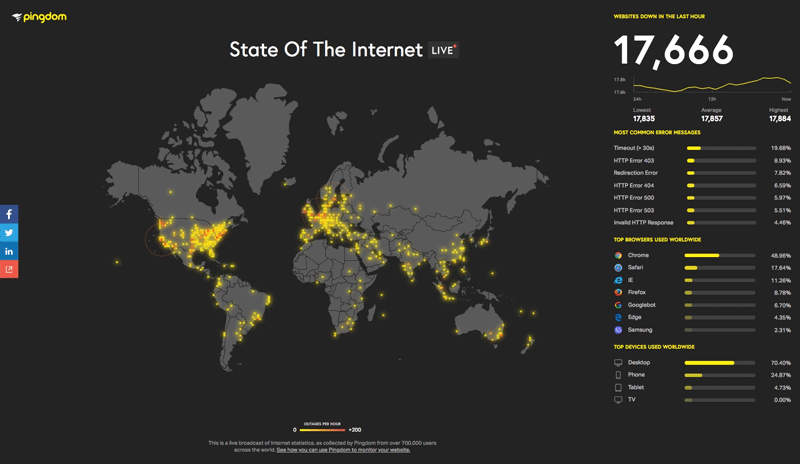[ad_1]
By Patrick Hubbard, SolarWinds Head Geek
When done well, application performance monitoring (APM) is a magical and irreplaceable tool. However, over the years, enterprises have sometimes paid dearly to implement it. APM’s task seems simple enough—replace emotional user anecdotes about application performance with quantifiable, actionable data. But the devil can certainly be in the details with APM. That’s beginning to change, but over decades of APM flirtation, it’s usually only the most well-heeled businesses who’ve actually maintained any sizeable implementation. That’s unfortunate. Modern application delivery methods don’t require the hardware, customization, or root access of the APM of old. Because as always with operations, as complexity decreases, cost usually does too.
Bespoke is a Bad Word
To be clear, overall IT complexity is increasing, primarily from the breadth of new technologies and platforms now under IT’s purview. But this overall increase has pressured infrastructure vendors to simplify the management of individual applications and related resources. And adopting standards and using commodity components is the modern method by which most vendors achieve that. Why reinvent the wheel when you don’t have to? Monitoring vendors love this—they can build one product with a handful of adaptations to collect data from many different combinations of application platforms, networks, and users. But that’s a relatively new phenomenon.
For years, vendors would create custom APM solutions for each enterprise or even different departments in the same business, based on their unique application’s design. They made code changes to the upstream applications. They added customized agents to each layer and instance of the application stack from storage to network to compute to NICs. They specified hardware-based traffic monitoring appliances at the firewall. And last, they built custom user endpoint simulators and deployed them to multiple locations where users were most commonly found. Time and materials contracts are fabulous if you’re a professional services team, but an expensive budget outlier for CIOs. Meanwhile APM’s true value wasn’t in dispute—it never has been. But for most businesses, it simply couldn’t pass the cost/benefit calculus.
Curing a Misconception Hangover
One of the most difficult aspects of IT life, knowing a tool exists that could transform the quality of applications, but they can’t afford it. Tech is good. Tech solves problems and makes the world a better place. And when we can’t have what we need it gnaws at us. Reversing this first impression is difficult, especially if it’s been reinforced every few years by revisiting a solution only to discover it hasn’t become proportionally less expensive over time with other technologies. But it may finally be a good time to give application performance monitoring a second look, now that most businesses have migrated their applications to commodity infrastructure, cloud, and SaaS to meet unrelated cost and performance goals.
For example, the custom application deployments of old have been replaced by virtualization, containerization, or other abstraction, which provides a common, standards-based layer for observation. Troubleshooting poor user experience back to infrastructure components no longer requires ops to maintain bespoke code or hardware. Generally, a single agent can now inject and collect transaction IDs to trace and visualize each step of an interaction in user requests.
Further, network device and firewalls now generally provide common methods for monitoring and logging requests, making it easier—and less costly—for APM tools to normalize and correlate users, network traffic, and infrastructure tracing. Last, modern browsers are far more standardized with powerful scripting and data collection options within application interfaces alone. And when APM tools can simply inject a bit script into webpages versus installing software on the user device, it effectively turns each user into their own user experience agent.
Last, if any technology was meant for SaaS, it might be APM. The most common single monitoring obstacle for IT pros is building yet-another-platform for collecting and correlating event data. Especially when it creates yet-another-platform requiring regular upgrades. Application owners and developers would much prefer to focus on innovation and delivery quality, not keeping invisible parts flying in formation on the back end. This is the primary reason modern APM systems like SolarWinds® Scopify®, AppOptics™, and Loggly® are all SaaS based. It converts most previously fiddly monitoring components into a managed service managed by experts, so the business can focus on what really matters—their users.
When to Take a Second (or Third or Fourth) Look
The business usually drives renewed interest in APM, not IT professionals. (Operations is always interested in data from any critical system—it’s like air for IT.) So, sometimes it’s the CMO or marketing team tying to quantify how many users are having problems with the latest release of their app. Other times it’s the ops team who needs to identify the root cause of user performance issues in a particular geo. Or it’s the development team debugging a page load problem that only appears for a particular inventory item description.
Increasingly it’s all of these plus a need to regain visibility lost in the migration to cloud and HCI. In all cases, APM is the go-to tool for ensuring the most important part of your application is working great: the human brain on the consuming end. And the only thing better than discovering a technology to make customers happy is discovering it’s also easy and affordable. No tool is useful if you can’t put it in your shed.
[ad_2]
Source link




